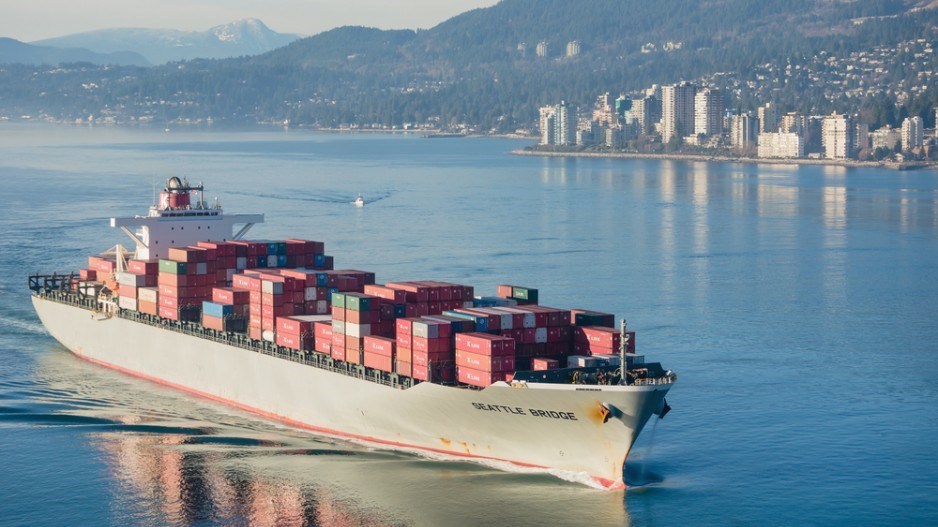Member states are touting the major potential for fewer tariffs and more exports across a dozen national economies after an agreement in principle was reached early Monday morning (October 5) for the Trans-Pacific Partnership (TPP).
Approval of the deal, which would create the world’s largest regional trade accord, comes after the latest round of negotiations in Atlanta that lasted five days.
The TPP includes 12 member states and accounts for 40% of the global gross domestic product. The goal is to reduce as many trade tariffs as possible between members.
Iain Black, CEO of the Vancouver Board of Trade, said in a statement the deal would deepen B.C.’s trade ties to the Asia-Pacific region.
“The TPP will further strengthen B.C.’s role in the global economy by reducing regulatory barriers on B.C. export such as wood and forestry products, metals and minerals, and B.C. fruit and seafood,” Black said.
The Forest Products Association of Canada (FPAC) said in a release the deal would help the group reach its goal of creating an additional $20 billion in economic activity from that sector between 2010 and 2020.
FPAC said Canada exports more than $22.6 billion annually to TPP countries but that figure is expected to grow with the reduction of tariffs throughout member states.
For example, TPP members Malaysia and Vietnam apply tariffs on forest products as high as 40% and 31%, respectively.
The Dairy Farmers of Canada (DFC) advocacy group was less welcoming to the potential for more competition in its sector, 90% of which is closed to foreign imports.
According to Agriculture and Agri-Food Canada, the TPP would cede to foreign competitors the equivalent of 3.25% of Canada’s milk production, 2.3% for eggs, 2.1% for chicken, 2% for turkey and 1.5% for broiler hatching eggs.
“Like my fellow dairy farmers, I am disappointed that additional access was granted in this deal,” DFC president Wally Smith said in a release.
“We recognize that our government fought hard against other countries' demands, and have lessened the burden by announcing mitigation measures and what seems to be a fair compensation package, to minimize the impact on Canadian dairy farmers and make up for cutting growth in the domestic market.”
Agriculture and Agri-Food Canada said Monday it would spend $4.3 billion compensating dairy, chicken and egg farmers over the next 15 years.
While trade ministers have signed off on the deal, the TPP must still be individually ratified among members.




